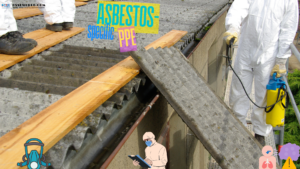The way to Refuse Unsafe Work
5 min readOne of the basic tasks of an employee is to show up to work on time and do what your supervisors and employers expect you to do. But what if they expect you to do something dangerous?
Most of us know that we have rights as workers, and that we never have to choose between a paycheck and risking life and limb. But knowing you can refuse unsafe work is one thing – knowing how to do it is another.


Takeaway: Refusing unsafe work doesn’t mean leaving the job site. If you leave the job site without being dismissed by your employer, they retain the right to take disciplinary measures or fire you.
What are your exact rights? What is the limit between unsafe work and the acceptable hazards that come with certain jobs? And what, exactly, is the procedure for refusing unsafe work?
Employer Responsibilities Related to Unsafe Work
When it comes to unsafe work, your first point of contact is your employer. If they’re notified of a hazard, it’s their responsibility to correct it.
According to the OSHA Act of 1970, your employer has to provide employees with a healthful and safe environment that is free of recognized hazards. This environment must also follow and adhere to OSHA regulations and standards.
Employers are already responsible for:
- Providing employees with safe tools and equipment, and maintaining those tools and equipment
- Using color codes and symbols to communicate hazards with employees
- Establishing operation procedures and communicating these to employees
- Providing training in a language and vocabulary the employees understand
- Keeping records of work-related illnesses and injuries
- Reporting any fatal accident or accident that resulted in the hospitalization of three or more employees within 8 hours
Know Your Rights
OSHA also protects certain employee rights, including the following:
Workers may request information from their employer about OSHA standards, worker illnesses and injuries, workers’ rights, and job hazards
- This includes employer records documenting any occupational illness and injuries, and any relevant exposure and medical records that are required to be maintained.
- Employers are required to provide the information within 15 days of the request
- Workers may ask employers to take action to protect them from known hazards or to correct OSHA violations
- If you make such a request, it is recommended that you keep a copy of it or any correspondence with your employer on the subject
- Workers may file a confidential complaint against an employer through OSHA
- Workers have the right to be involved in workplace safety inspection completed by OSHA
- During inspections or audits, workers also have the right to communicate privately and confidentially with the OSHA representatives or compliance officer
- Workers also have the right to have a union representative present during an inspection
- Workers have the right to be provided with the results of an OSHA inspection
- Workers have the right to participate in meetings during which the employer may disagree or object to OSHA citations or changes in abatement deadlines
- Workers may file a formal appeal of deadlines for the employer’s correction of hazards
- Workers may request a research investigation to review the workplace for possible health hazards
- Workers are entitled to provide comments and testimony to OSHA during the formation of new standards or rule making
(Learn about Conducting and employer investigation.)
Employee Responsibilities
While workers are entitled to certain rights within the workplace, they also have several responsibilities. According to OSHA, employees must comply with all health and safety standards applicable to their jobs and must:
- Read and understand the OSHA health and safety poster displayed in the workplace
- Follow the health and safety rules outlined by the employer regarding the use of personal protective equipment
- Follow the safe work procedures outlined by the employer
- Report any unsafe or hazardous conditions to a supervisor or designated safety official
- Contact OSHA if the employer does not rectify reported hazards
Refusing Work and Filing a Complaint
If you have reason to believe that your workplace is hazardous to your health and well-being (or that of your coworkers), bring your concerns to your employer first.
Your employer may need to OSHA for advice on improving the working conditions or controlling hazards.
As an employee, you have a legal right to refuse work if you have reason to believe that a hazard poses a serious or imminent risk.
Complaints
If you believe that conditions in your workplace may constitute a violation of an OSHA standard, you can file a complaint with OSHA by phone, online, or in person at an OSHA office.
Imminent Danger
To report an imminent danger, call OSHA immediately. An imminent danger is defined by OSHA in Section 13(a) of the OSH Act of 1970 as:
any conditions or practices in any place of employment which are such that a danger exists which could reasonably be expected to cause death or serious physical harm immediately or before the imminence of such danger can be eliminated through the enforcement procedures otherwise provided by this Act.
Before a hazard can be classified as imminent, the following criteria must be met:
- A serious threat of death or bodily harm must be present
- Serious physical harm is classified as physical damage whereby the part of the body that is injured cannot be used or used at its previous capacity
- If a health hazard is suspected, there must be reasonable expectation that toxic substances are present and that the harm caused by the exposure to the hazard will shorten life expectancy or cause a substantial reduction in physical or mental efficiency
- The effects of the health hazard need not be immediately apparent
- If an OSHA inspector or compliance officer confirms the presence of an imminent danger, they must make it known to the employees and employer and inform the employer of what steps are required to deal with the hazard
- If the employer does not comply with OSHA’s recommendations, OSHA has the right to request a federal court order for the removal of the hazard
Refusing Work
An employee has the right to refuse work if that refusal is in good faith, meaning that they genuinely believe and have reasonable grounds to believe that they are exposed to imminent danger.
An employee does not have the right to walk off the jobsite after refusing unsafe work. OSHA may not be able to protect you if you leave and the worksite and your employer terminates your employment. The employer may not, however, take any such action against you if they have asked you to leave until the hazard is controlled.
If you fear that you may be discriminated against if you refuse unsafe work, or that your employer might take other forms of retaliatory action against you, know that the OSHA Act and other legislation are in place to protect you. OSHA also has whistleblower protection programs if your employer refuses to rectify dangerous working conditions.
Reporting Unsafe Work Is Every Worker’s Responsibility
Remember, you’re not alone out there. Unsafe working conditions can affect your coworkers and visitors to your worksite. That’s why reporting and refusing unsafe work isn’t just your ring – it’s also your responsibility.
If you see dangerous conditions at your workplace, speak up and take action.



